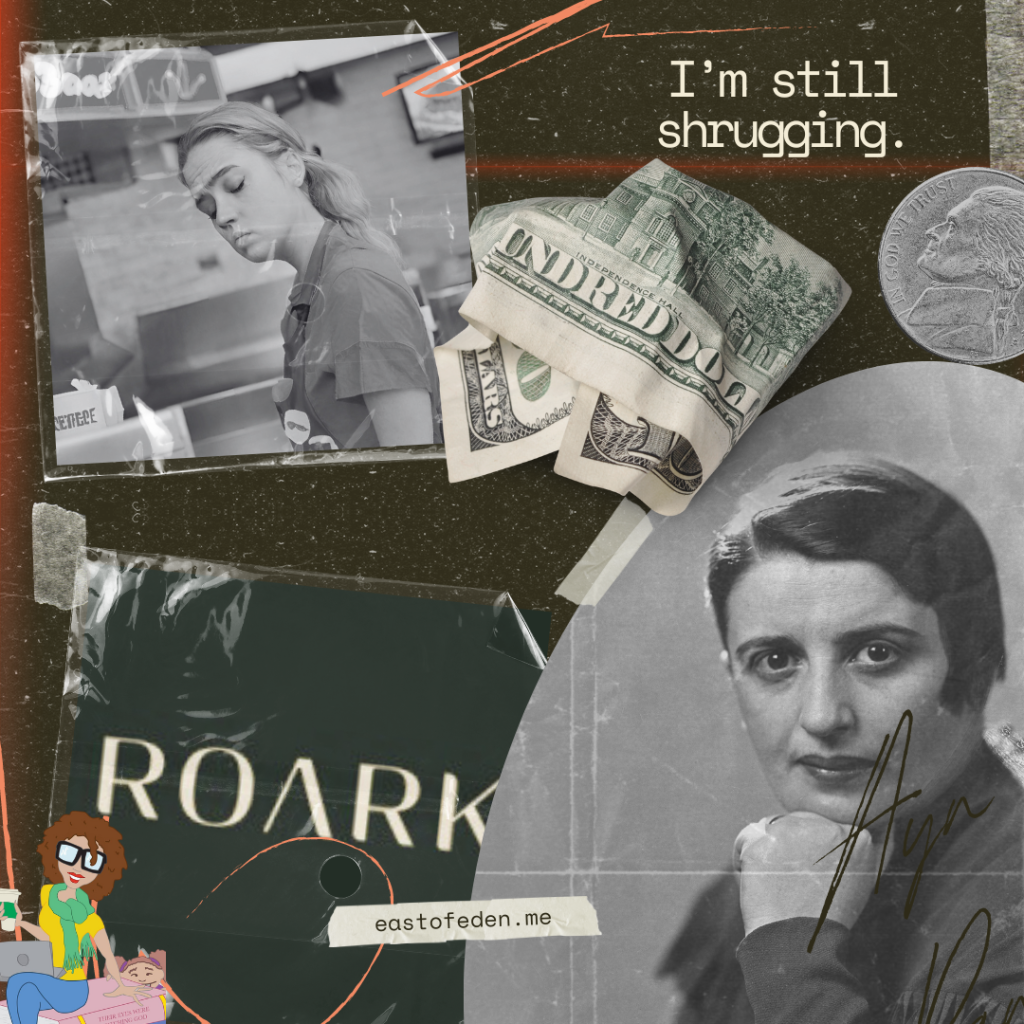Lent 2024, Day 15: I’m still shrugging.

I’ve made no secret of my disdain for Ayn Rand and her philosophy of Objectivism, and I was reminded of why this morning when I saw this video:
Yuck. For more on what happens when Randian ideals are made real, let’s look at this 2016 article by Denise Cummins at PBS:
The core of Rand’s philosophy — which also constitutes the overarching theme of her novels — is that unfettered self-interest is good and altruism is destructive. This, she believed, is the ultimate expression of human nature, the guiding principle by which one ought to live one’s life. In “Capitalism: The Unknown Ideal,” Rand put it this way:
Collectivism is the tribal premise of primordial savages who, unable to conceive of individual rights, believed that the tribe is a supreme, omnipotent ruler, that it owns the lives of its members and may sacrifice them whenever it pleases.
By this logic, religious and political controls that hinder individuals from pursuing self-interest should be removed. (It is perhaps worth noting here that the initial sex scene between the protagonists of Rand’s book “The Fountainhead” is a rape in which “she fought like an animal.”)…
To many of Rand’s readers, a philosophy of supreme self-reliance devoted to the pursuit of supreme self-interest appears to be an idealized version of core American ideals: freedom from tyranny, hard work and individualism. It promises a better world if people are simply allowed to pursue their own self-interest without regard to the impact of their actions on others. After all, others are simply pursuing their own self-interest as well.
Modern economic theory is based on exactly these principles. A rational agent is defined as an individual who is self-interested. A market is a collection of such rational agents, each of whom is also self-interested.
So what if people behaved according to Rand’s philosophy of “objectivism”? What if we indeed allowed ourselves to be blinded to all but our own self-interest?

In 2008, Sears CEO Eddie Lampert decided to restructure the company according to Rand’s principles.
Lampert broke the company into more than 30 individual units, each with its own management and each measured separately for profit and loss. The idea was to promote competition among the units, which Lampert assumed would lead to higher profits. Instead, this is what happened, as described by Mina Kimes, a reporter for Bloomberg Business:
An outspoken advocate of free-market economics and fan of the novelist Ayn Rand, he created the model because he expected the invisible hand of the market to drive better results. If the company’s leaders were told to act selfishly, he argued, they would run their divisions in a rational manner, boosting overall performance.
Instead, the divisions turned against each other — and Sears and Kmart, the overarching brands, suffered. Interviews with more than 40 former executives, many of whom sat at the highest levels of the company, paint a picture of a business that’s ravaged by infighting as its divisions battle over fewer resources.
A close-up of the debacle was described by Lynn Stuart Parramore in a Salon article from 2013:
It got crazy. Executives started undermining other units because they knew their bonuses were tied to individual unit performance. They began to focus solely on the economic performance of their unit at the expense of the overall Sears brand. One unit, Kenmore, started selling the products of other companies and placed them more prominently than Sears’ own products. Units competed for ad space in Sears’ circulars…Units were no longer incentivized to make sacrifices, like offering discounts, to get shoppers into the store.
Sears became a miserable place to work, rife with infighting and screaming matches. Employees, focused solely on making money in their own unit, ceased to have any loyalty to the company or stake in its survival.
We all know the end of the story: Sears share prices fell, and the company appears to be headed toward bankruptcy.
Sears filed for bankruptcy in 2018; as of January of this year, only a dozen stores remain. Ayn Rand: bad for Christians, bad for business, and after sloughing through The Fountainhead, I say, bad at editing.
